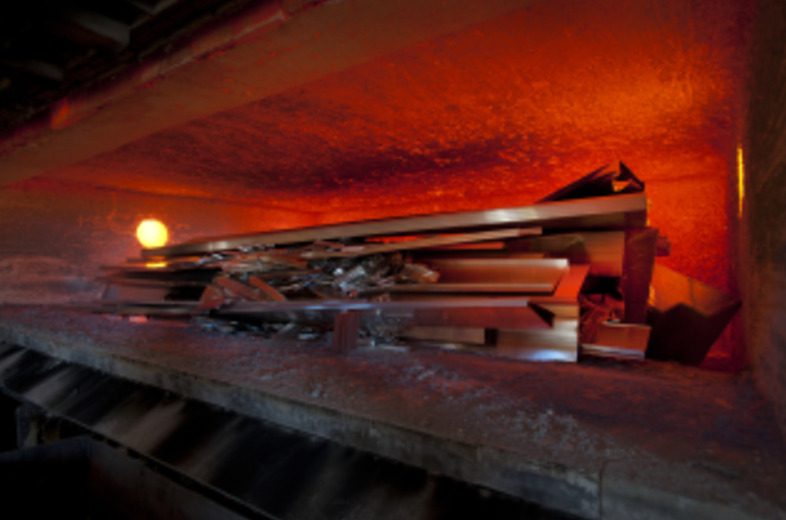Depending on its source, aluminium scrap may contain a range of impurities.
These can be removed via pre-treatment processes or in the melting furnaces.
Scrap such as used beverage cans (UBCs) and turnings sometimes require the removal of coatings or oils prior to melting, to improve metal recovery and to reduce potential emissions.
The choice of furnaces is to a large extent determined by the level and type of impurities. Scrap refining process can be generically described with the following steps:
- Combinations of different scraps (sized and/or pre-treated) are selected based on the analysis of their alloy composition for charging into the melting furnaces
- In the melting furnaces, salt fluxes are added to cover the molten metal to remove impurities and meanwhile protect metal from oxidisation
- After melting, the molten metal is transferred to holding furnaces for further refining processes such as de-gassing, reduction of magnesium content (a process known as “de-magging”) and for adding alloying elements
- From the holding furnaces, molten metal is either tapped to the casting unit to produce ingot or slabs, or into crucibles for liquid aluminium delivery
Energy is consumed throughout the refining process. The transformation of scrap into recycled aluminium alloys requires approximately 5% of the energy input needed to produce primary ingot from bauxite. Depending on the impurities in the scrap, various air emissions may be generated, such as organic compounds and dust. Solid wastes such as dross, skimmings and salt slag can also be generated in the refining process. Dross and skimming are processed, often in the same plant, to recover the metal. Salt slags are recycled in specialised facilities to recover the metal and other products.

